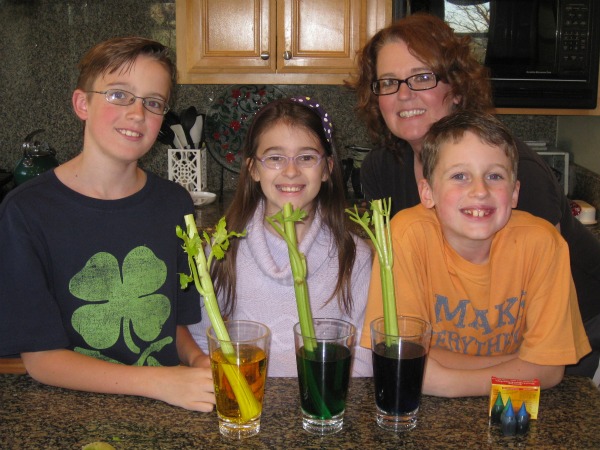
Stacy Oliver, a homeschool teacher for her three kids (ages 8, 10, and 11), discovered howtosmile.org when it was mentioned in a 4-H newsletter. "It was love at first sight," says Stacy, who lives with her family in San Jose, California.
"I have to be honest, and say that science is my nemesis. That's one of the reasons I have latched onto howtosmile.org—I need science help!"
When Stacy joined the howtosmile.org community, she hit the ground running. She's already created 10 lists (one of which, Spy Science, was favorited by five other users), and has racked up 70 points and 6 badges. Her comments on activities are especially helpful, like this comment on the Cohesion Coin activity, which suggests an alternate experiment.
Howtosmile.org asked Stacy her thoughts on science and how she teaches her kids.
SMILE: What's your favorite howtosmile.org activity and why?
Stacy: Too many to choose from! But I'd have to say that building our own solar oven from a pizza box was great fun. We ended up using it as a science fair project, and learned quite a bit about solar energy and cooking. After doing this activity, my son decided to research making a solar dehydrator as a side project. Great!
SMILE: What howtosmile.org feature do you most appreciate?
Stacy: There are so many things I love about howtosmile, but one of the most useful is list creation. When I have a particular topic to go through in science, I can pick and choose several experiments and activities that suit, and then store them for future reference. Plus, looking into others' lists saves time in selecting activities that have been recommended. The comments have also been invaluable—especially those from teachers who have done the experiments and offer suggestions on materials or tweaks in the process to make it better. (Thank you to all the science brains out there who share your wisdom!)
SMILE: How would you like to see howtosmile.org grow and change? How could the site and community be more useful to you?
Stacy: For myself, it would be helpful to have a section to ask questions from the experts such as, "I'm teaching 5th grade cell stuff...." (See, I'm so scientific.) "...What activities do you like to do with your students?" This may become more of a burden to the site than a help, so I don't know if it's feasible to do.
In addition to cataloging experiments and activities, it would help to have resources such as explanations of concepts, like this page on how atoms work or this page comparing plant and animal cells.
It may be nice to be able to send emails to other members, either asking them questions or sending appreciation for a list or comment.
(Note: The howtosmile.org tech team is working on allowing members to contact each other without sacrificing member privacy. Stay tuned for this and other expansions of the community functions of the site.)
SMILE: Do you read the howtosmile.org blog? If so, what have been your favorite posts?
Stacy: I do read the blog. I'm enjoying the frog series right now. I'd always been led to believe that toads are bad drivers, but didn't realize they had no teeth.
SMILE: Anything you'd like to add?
Stacy: I'm a real science bonehead, so I have found enormous help in your site. My philosophy of science is that it needs to be fun to have lasting impact. By incorporating the ideas found on howtosmile.org, I can bring to life concepts that seem abstract or complex and give kids a positive experience with science.
Photo of Stacy and her kids courtesy of Stacy Oliver; they're using colored water and celery stalks to learn about how water moves in plants. See Moving on Up: Capillary Action for a similar activity.
